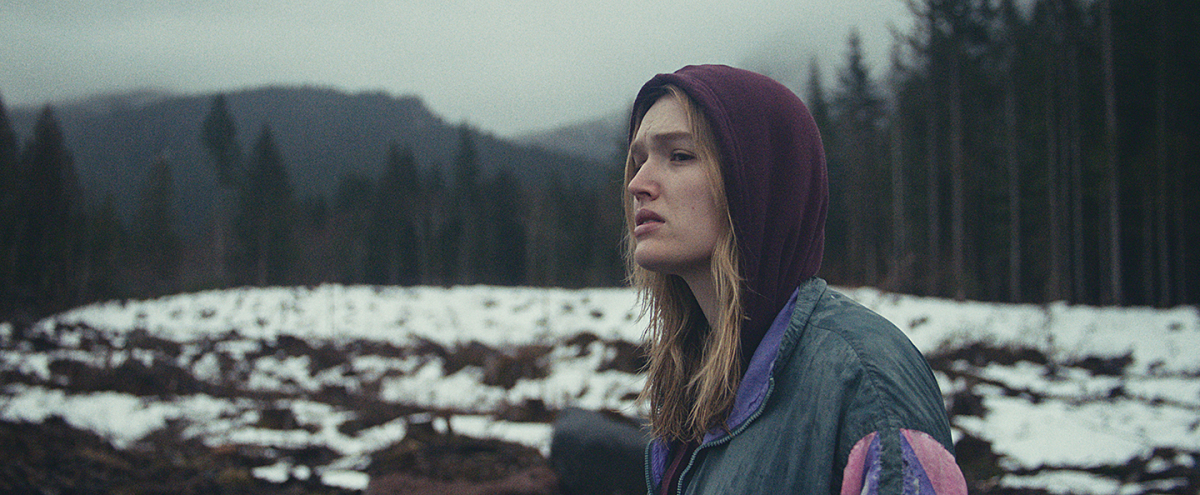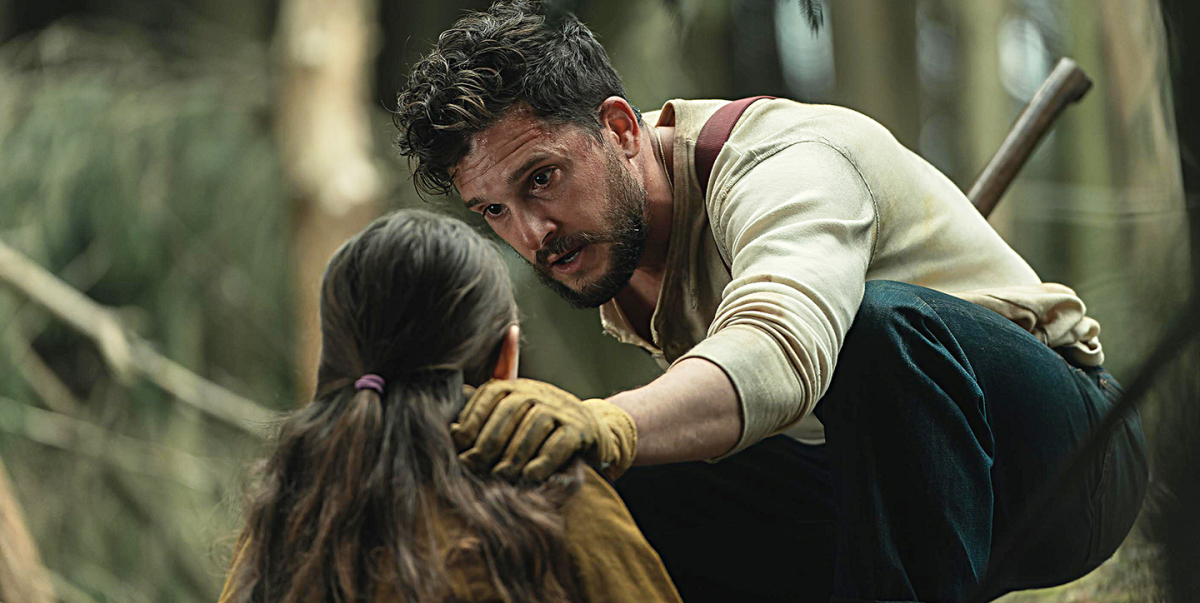
There are only so many story plots. I’ve heard the total set at ten, then thirty-four. Whatever the number, the point is that the stories we tell have narrative precedents and what springs from them are variations on established themes.
Fairytales are a particularly fertile source of these plots: they are short, structured, and carry a strong moral message. And they’re as good a jumping-off point as any for first time writer/directors. Two recent films, To Kill a Wolf and The Beast Within, offer contemporary takes on Little Red Riding Hood. In both, all the elements are there—naive girl, dense woods, Grandma, wolf, woodsman—but each posits a unique interpretation.
Let’s look under the hood(s).
To Kill a Wolf
In To Kill a Wolf, the Woodsman is a bearded recluse named Jonah who lives in the mountains of Oregon. He trawls the woods with a metal detector to expose wolf traps set by his predecessor for local ranchers. Jonah lives a spare existence; it’s a job and he needs the money. One day, he comes upon an unconscious young woman huddled in only her clothes in the snow and cold (she has on a red hoodie, of course). Dani is a teenage runaway, who after much reticence claims a “disagreement with my aunt” sent her into the wilderness. Jonah offers to take her home, though he resents the obligation. “If you can’t help yourself, help somebody else,” he huffs half-heartedly.
The house they go to is empty. Dani fesses up that it’s her grandmother’s and Grandma has died recently. Dani and her aunt Jolene (Kaitlyn Doubleday) and Jolene’s husband Carey (Michael Esper) have been packing up her belongings and closing out the place.
From the opening scenes of To Kill a Wolf you know you’re in good hands. Kelsey Taylor’s script and direction are steady and confident, and—as the story’s contours become clear—perfectly proportioned. By that I mean she resists overreaching in the manner of other American indies whose ambitions are bigger than their budgets. Ms. Taylor knows what she wants and has a terrific cast and crew to help her get it. She plants subtle symbols and connects narrative threads.
To Kill a Wolf is as engrossing a drama as I’ve seen in a long time: poignant, horrific, and fully realized. Ivan Martin and Maddison Brown make the bond between Jonah and Dani believable and heartbreaking. Mr. Martin builds Jonah’s character out of grunts and ticks. He’s a gruff man with his own cross to bear. Ms. Brown’s Dani is achingly conflicted; there’s a lot brewing behind those eyes. As Jolene, Dani’s aunt, Kaitlyn Doubleday shows the restraint that comes from enduring a sour marriage. And Michael Esper as husband Carey keeps switching masks as one of the most slippery characters I’ve seen in a long time. Even David Knell’s brief turn as The Rancher is simple and direct.
Suspense builds from character and is honestly earned. Several scenes are memorable, including Jonah instructing Dani how to free a wolf from a trap (it’s his goal in locating the traps to sabotage them), and a kitchen scene of psychological manipulation.
Music plays an important role in the film, and the mournful score by Sara Barone and Forest Christenson and sound design by Eric Wegener guide the action. The original songs are used prudently and sound appropriate, codes from an alternate universe. Adam Lee’s cinematography is dense and moody.
The producers of To Kill a Wolf are proud that it’s a “truly independent film” (as of this writing, Kelsey Taylor even handles sales). All in all, this is an understated gem and a wonderful film by a first-time auteur.
______________________________________________
To Kill a Wolf. Directed by Kelsey Taylor. 2024. 92 minutes.

The Beast Within
The Beast Within updates Little Red Riding Hood differently.
A family in a farm on the English countryside suffers a family curse: every full moon, Noah the father turns into a wolf. When Imogen the mother knows it’s coming on, she packs him in the car, drives him far away, chains him to a stone wall, and leaves him to transform and take out his rage away from them. Later, when he’s back to normal, she brings him home. (The era is indeterminate: on the farm it’s medieval times, but they travel by Range Rover).
Mother and father try to keep this routine hidden from their eleven-year-old daughter Willow. All she knows is her father goes away periodically and comes back looking worn out. And that surly old Grandpa doesn’t like his daughter Imogen’s involvement one bit.
Willow is the film’s protagonist, and she’s played by Caoillinn Springall, a child actor whose features would, in an earlier time, make her the favorite model of classical painters. She has a penetrating gaze, an earthy laugh, and wears a red cape. Willow is curious about where Noah disappears to, and one night stows away in the car and beholds the harrowing scene. Imogen placates Noah with a sacrificial farm animal, chained within reach, to satisfy his appetite. The bloody carnage Willow witnesses intrigues her as much as it scares her.
So, okay: The Beast Within is shaping up, maybe into an allegory about Willow’s imminent womanly flow (hello, full moon) and sexual awakening. The movie looks great, besides: Daniel Katz’s cinematography has stunning clarity; shots are composed and lit like Gregory Crewdson photos, darkness punctuated by beams of celestial light. Looks like writer/director Alexander J. Farrell (a documentary filmmaker; this is his first narrative feature) is on to something.
And for a good half hour these ideas fall into place. But then things fall apart. These good ideas crumble, the direction becomes ambiguous and the editing choppy.
To make matters worse, this happens to an exceptional cast: Noah is played by Kit Harington, Jon Snow from HBO’s Game of Thrones. James Cosmo, who plays Grandpa, is also from Game of Thrones, plus Braveheart, and Amazon Prime’s Jack Ryan. Imogen, the mother, is played by Ashleigh Cummings, best known for her role in Amazon Prime’s Citadel, but chosen here for her young looks and resemblance to Caoillinn Springall’s Willow.
The Beast Within has foils and surrogates galore. Willow’s maternal grandfather is a doppelganger for Dad, a version of him older. Willow is a dead ringer for her girlish Mom; in fact, they switch roles, in dress and action. This doubling comes off as intentional and plays into the theme of filial destiny.
The father is the problem. Mr. Harington tries mightily in his portrayal to show the effects of his curse: he plays Noah big, with grand gestures and a theatrical roar. But his scenes are truncated; his characterization is not cohesive. How does the movie expect us to take Noah? Is he a good man or an asshole? This ambivalence redirects the story’s point of view from Willow’s. It’s plain someone will be consumed, but who and by what?
The wolf creature design is an afterthought, accomplished with shadows and silhouettes. But the monster isn’t the point anyway. This is an allegory, remember, not a special effects fest. Which makes the climax disappointing: it’s too abrupt and explicit, and the denouement is made up of montages that suggest more footage was shot—whole sequences—than what was used in the final cut.
__________________________________________________
The Beast Within. Directed by Alexander J. Farrell. 2024. From Well Go and Arclight Films. 84 minutes.
